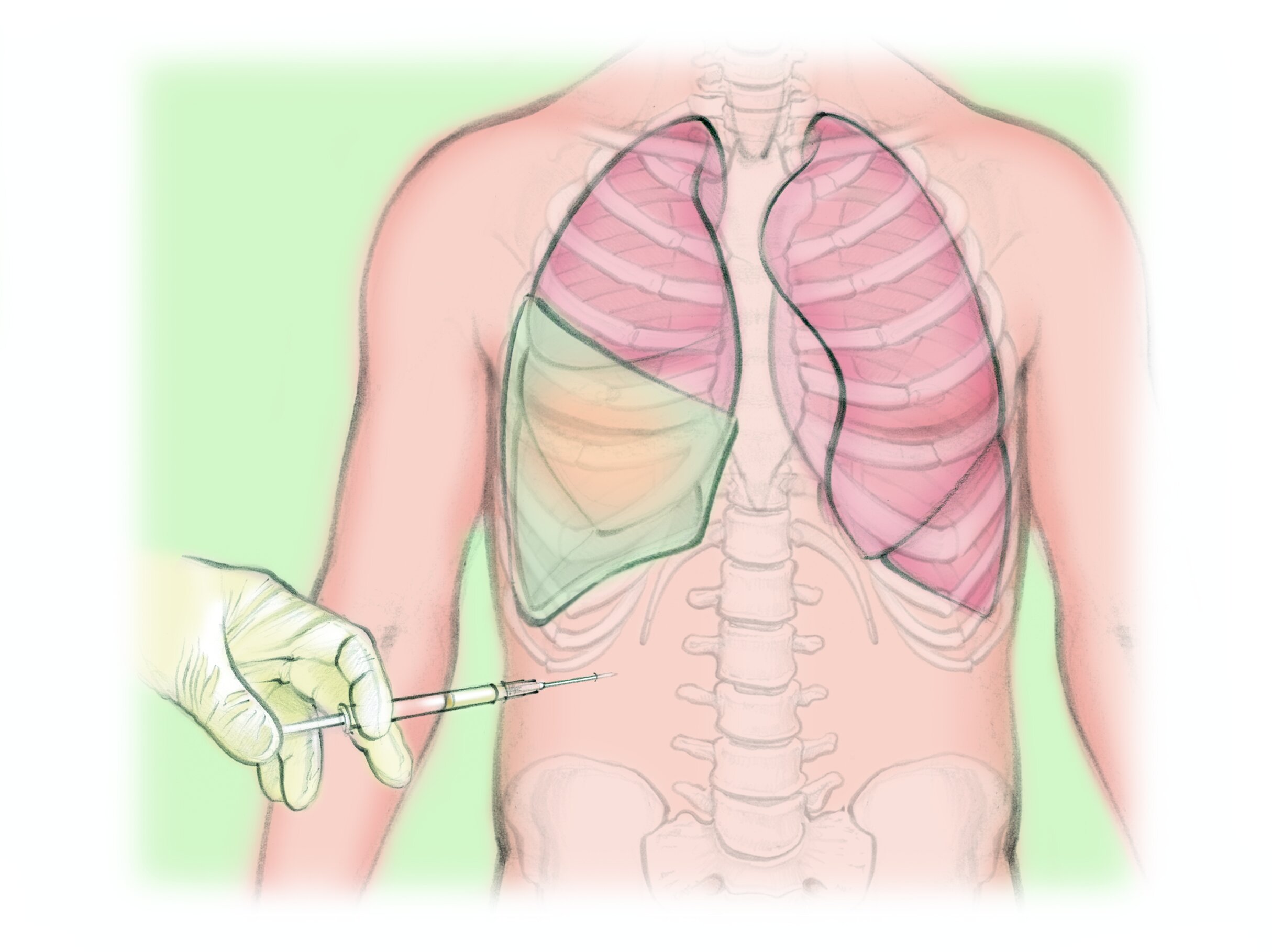What is a Tunneled Peritoneal or Pleural Catheter?
A tunneled peritoneal or pleural catheter is a small flexible tube that allows a person to drain the excess fluid from their body. The tube goes under the skin before it enters the place in the body where the fluid keeps building up. It is called a tunneled pleural catheter when it drains fluid from the chest. It is called a tunneled peritoneal catheter when it drains fluid from the belly.
Fluid can build up in the body due to issues like heart weakness, liver disease, cancer, inflammation or infections. Sometimes the fluid does not come back after it is drained. Other times, the fluid keeps coming back. Excess fluid can cause trouble breathing, bloating, and discomfort. A tunneled peritoneal or pleural catheter allows a person to drain the fluid at home, whenever they need to.
How is a Tunneled Peritoneal or Pleural Catheter placed?
You will lay on your back. You will get medicine to make you comfortable. Your clinician will numb the skin. They will tunnel the tube under the skin and then into the fluid in the chest or belly. They will teach you how to connect the tube to special containers to drain the fluid.
Tunneled Drainage Catheter
1. The clinician will numb the skin.
2. They will tunnel the tube under the skin and into the fluid in the body (chest shown).
3. The tube can be connected to special containers to collect the fluid.
What are the risks?
Placing a tunneled peritoneal or pleural catheter is a very safe procedure when done by a specialist.
Risks while placing the tube are very rare. They include bleeding and damage to nearby structures, such as the lungs or bowel.
The more common risks are from having a tube in the body long-term.
1 in 5 people
the tube stops working or falls out
develop an infection.
For these people, the tube will need to be fixed or replaced.
What are the alternatives?
Your options will depend upon your specific health condition and your preferences.
Alternative 1 Not doing any procedure. The fluid could come back and be uncomfortable.
Alternative 2 Repeat paracentesis or thoracentesis. This longer-term tube is placed in your belly to allow you to drain the fluid into special containers at home.
Alternative 3 Denver shunt. This tube is similar to a tunneled peritoneal or pleural catheter. Instead of draining the fluid outside the body, the tube remains under the skin and drains fluid from the belly into a vein in the neck.
The options above do not treat the cause of the fluid. They help get rid of the fluid that builds up. If you are eligible for other treatments to stop the fluid from building up at all, your clinician will discuss them with you.




